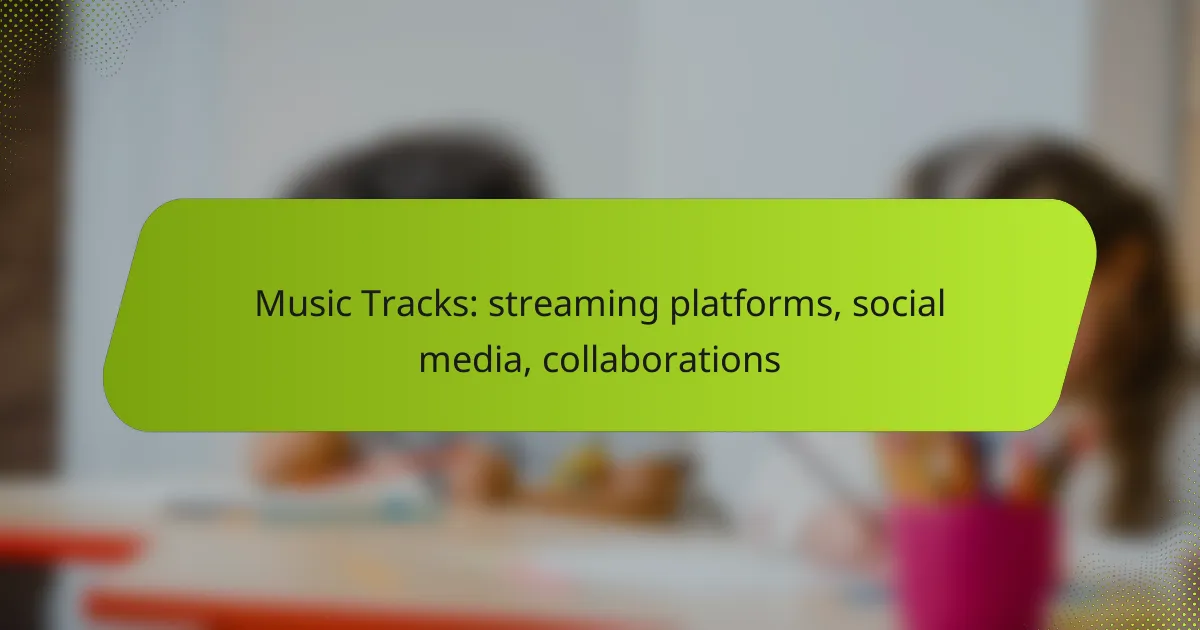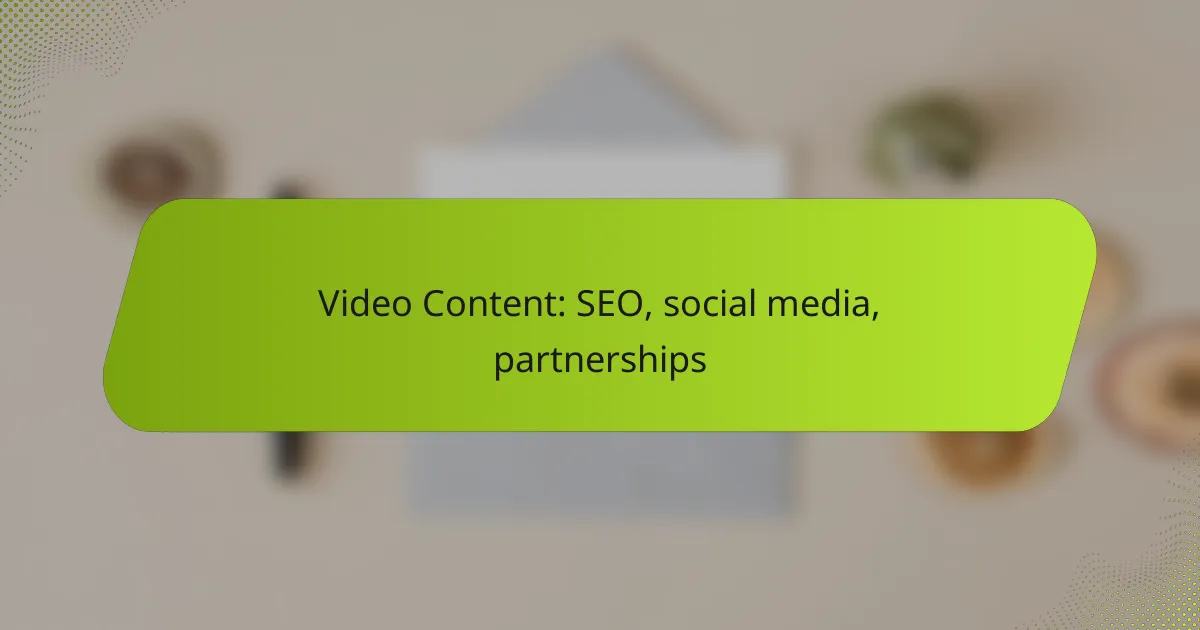In today’s digital landscape, streaming platforms play a crucial role in delivering music tracks, each offering distinct features that cater to diverse listener preferences. Social media serves as a powerful tool for promoting these tracks, enabling artists to engage with their audience and boost visibility. Additionally, collaborations between musicians not only enhance creativity but also allow them to reach new audiences and share marketing efforts, resulting in innovative music experiences.
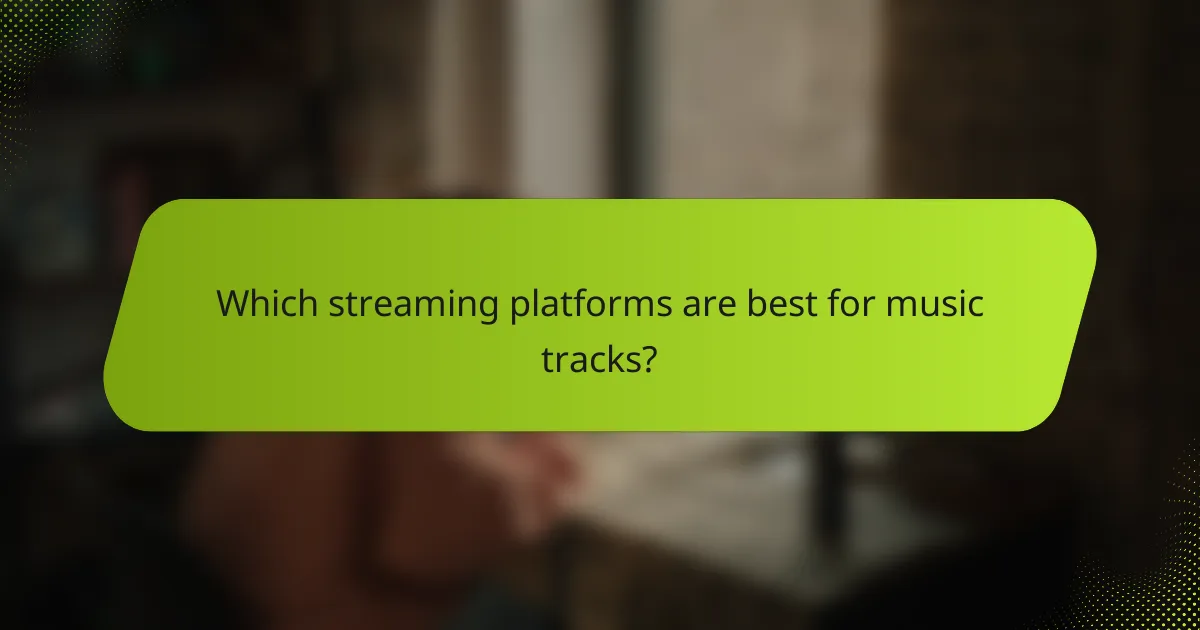
Which streaming platforms are best for music tracks?
Several streaming platforms excel in delivering music tracks, each with unique features and user experiences. The best choice often depends on personal preferences, such as music library size, audio quality, and user interface.
Spotify
Spotify is one of the most popular music streaming services globally, known for its extensive library and user-friendly interface. It offers both free and premium subscription options, with the premium version providing ad-free listening and offline downloads.
Spotify’s algorithm curates personalized playlists, making it easy for users to discover new music. The platform also supports social sharing, allowing users to connect with friends and share their favorite tracks seamlessly.
Apple Music
Apple Music is a subscription-based service that integrates well with Apple’s ecosystem, offering a vast library of over 90 million songs. It provides a three-month free trial for new users, after which a monthly fee applies.
One of Apple Music’s standout features is its curated playlists and radio shows, which are crafted by music experts. Additionally, it offers lossless audio and spatial audio options for an enhanced listening experience.
Amazon Music
Amazon Music offers several tiers, including a free version for Prime members and a standalone subscription service. The platform boasts a library of millions of songs and is integrated with Alexa for voice control.
Amazon Music Unlimited provides access to a broader range of tracks and features, such as personalized playlists and offline listening. It’s a solid choice for users already invested in the Amazon ecosystem.
Tidal
Tidal is known for its high-fidelity audio quality and exclusive content, making it a favorite among audiophiles. It offers a subscription model with options for standard and HiFi tiers, the latter providing lossless audio streaming.
Tidal also emphasizes artist support, offering higher payouts per stream compared to other platforms. Its unique features include exclusive album releases and music videos, appealing to users who value artist-centric content.
YouTube Music
YouTube Music combines the vast library of YouTube with a dedicated music streaming experience. Users can access official tracks, remixes, and live performances, making it a versatile option for music discovery.
The platform offers a free version supported by ads, while the premium subscription removes ads and allows offline listening. YouTube Music’s integration with YouTube allows users to easily switch between music videos and audio tracks.
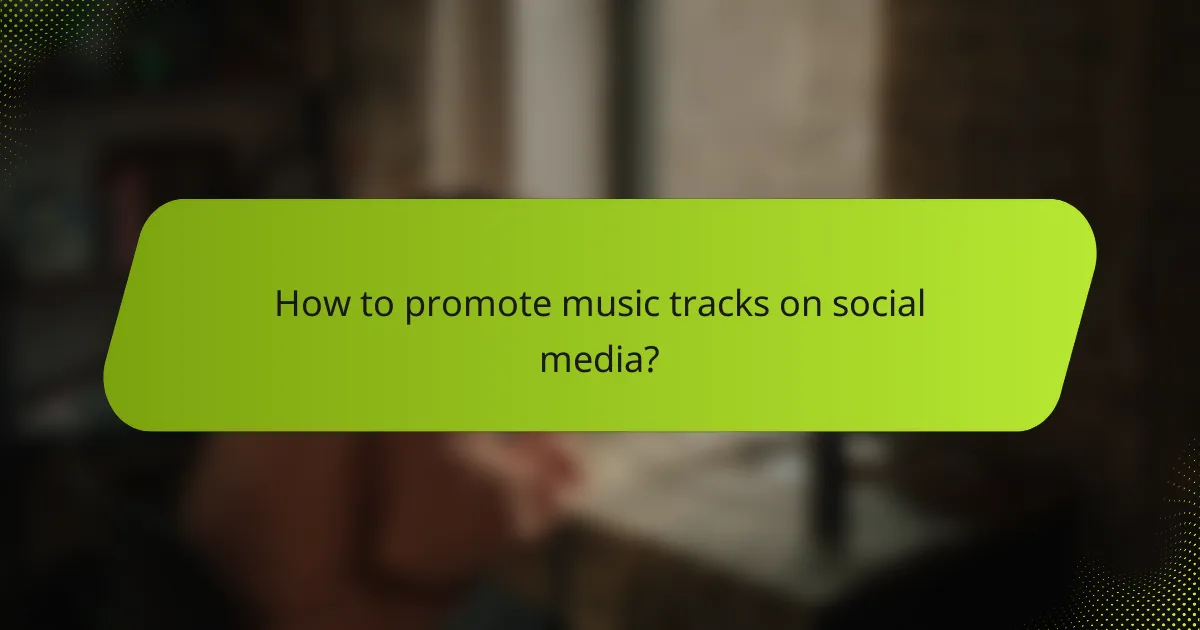
How to promote music tracks on social media?
Promoting music tracks on social media involves leveraging various platforms to reach and engage your audience effectively. Utilizing targeted strategies can enhance visibility, foster community, and drive streams and sales.
Instagram marketing strategies
Instagram is a visually-driven platform ideal for showcasing music tracks through eye-catching content. Use high-quality images, engaging videos, and stories to highlight your music, behind-the-scenes moments, or live performances.
Consider collaborating with influencers or other artists to expand your reach. Utilize features like Instagram Reels to create short, engaging clips that can go viral, and always include relevant hashtags to increase discoverability.
Facebook ad campaigns
Facebook offers robust advertising tools that allow you to target specific demographics based on interests, location, and behavior. Create ads that feature your music tracks, using compelling visuals and clear calls to action to encourage clicks and listens.
Experiment with different ad formats, such as video ads or carousel ads, to see what resonates best with your audience. Monitor performance metrics closely to optimize your campaigns and allocate your budget effectively.
Twitter engagement techniques
Twitter is an excellent platform for real-time engagement and conversation. Share snippets of your music tracks, lyrics, or thoughts on music trends to spark discussions with your followers.
Utilize Twitter polls to engage your audience and gather feedback on new releases. Regularly interact with fans by responding to comments and retweeting user-generated content that features your music, fostering a sense of community and loyalty.

What are the benefits of music collaborations?
Music collaborations offer artists the chance to expand their reach, enhance their creativity, and share marketing costs. By working together, musicians can tap into each other’s audiences and resources, leading to greater exposure and innovative soundscapes.
Increased audience reach
Collaborating with other artists allows musicians to access new fan bases. When two or more artists join forces, their combined followers can significantly increase the visibility of their music.
For example, a well-known artist featuring an up-and-coming musician can introduce that newcomer to thousands of potential fans. This cross-promotion can lead to a substantial boost in streaming numbers and social media engagement.
Enhanced creativity
Collaboration often sparks new ideas and creative approaches. Different musical backgrounds and styles can lead to innovative sounds that may not have emerged in solo work.
Working with others encourages experimentation, which can result in unique tracks that stand out in a crowded market. Artists can learn from each other, blending genres and techniques to create something fresh and exciting.
Shared marketing costs
Collaborating on music projects can help artists share the financial burden of marketing. Instead of each artist bearing the full cost of promotions, they can pool resources for advertising, music videos, and social media campaigns.
This shared approach can lead to more effective marketing strategies, as combined efforts often yield better results than individual campaigns. For instance, joint promotional events or social media takeovers can amplify reach while minimizing expenses.
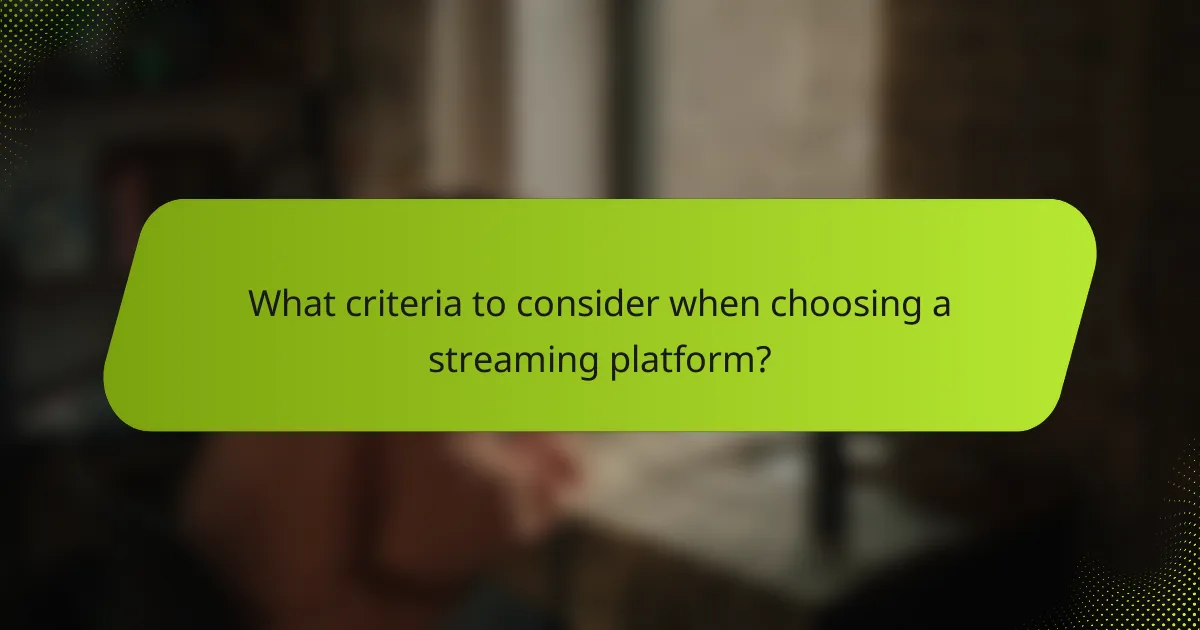
What criteria to consider when choosing a streaming platform?
When selecting a streaming platform, consider factors such as royalty rates, user demographics, and platform features. These elements can significantly impact your earnings, audience reach, and overall experience as an artist.
Royalty rates
Royalty rates vary widely among streaming platforms and can significantly affect your income. Typically, rates range from a fraction of a cent to a few cents per stream, depending on the service. For example, platforms like Spotify and Apple Music have different payout structures, so it’s essential to understand how each one compensates artists.
When evaluating royalty rates, consider not only the per-stream payout but also how often users engage with your music. Higher engagement can lead to better overall earnings, even if the per-stream rate is lower.
User demographics
User demographics play a crucial role in determining the right streaming platform for your music. Different platforms attract various age groups, geographic locations, and listening preferences. For instance, younger audiences may prefer platforms like TikTok or SoundCloud, while older listeners might gravitate towards Spotify or Apple Music.
Understanding the demographics of each platform can help you tailor your marketing strategies and maximize your reach. Analyze where your target audience is most active to ensure your music gets the exposure it deserves.
Platform features
Each streaming platform offers unique features that can enhance your music distribution and promotion. For example, some platforms provide robust analytics tools, allowing you to track listener engagement and demographics. Others may offer promotional tools like playlist placements or social media integration to help you reach a broader audience.
When choosing a platform, consider which features align with your goals as an artist. Look for options that facilitate collaboration, audience interaction, and effective marketing to optimize your presence in the music industry.
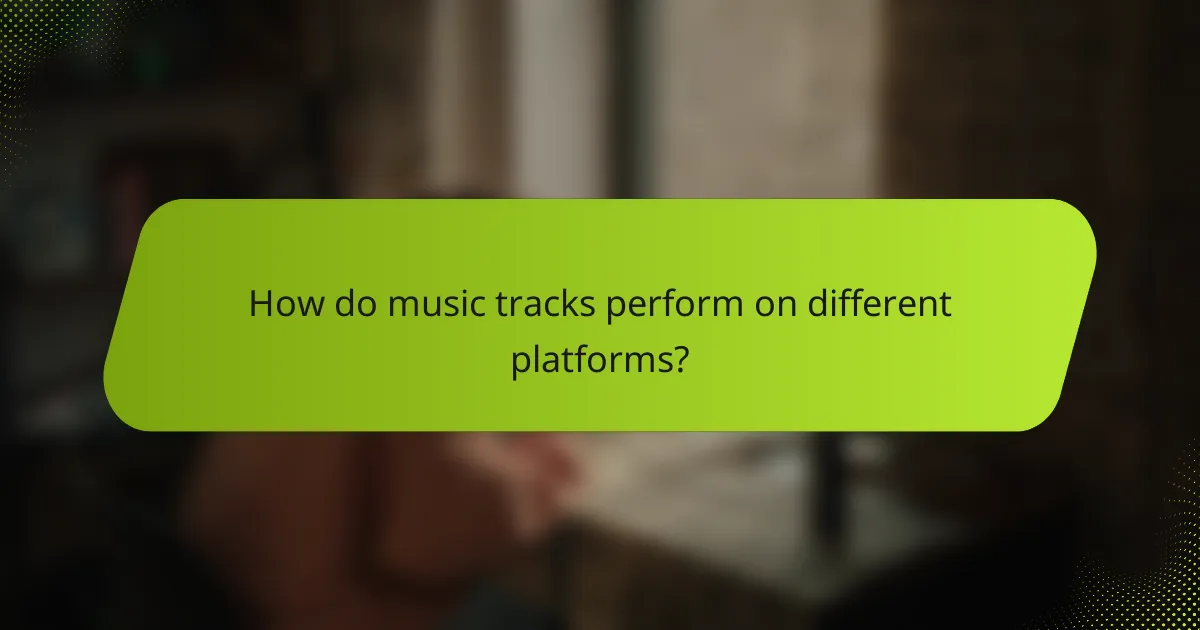
How do music tracks perform on different platforms?
Music tracks perform differently across various streaming platforms, influenced by factors like audience demographics, platform algorithms, and promotional tools. Understanding these differences can help artists and labels optimize their strategies for reaching listeners.
Streaming Platforms
Streaming platforms like Spotify, Apple Music, and YouTube each have unique algorithms and user bases that affect how music tracks are discovered and consumed. For instance, Spotify’s algorithm favors playlists, which can significantly boost a track’s visibility if included.
Artists should consider tailoring their releases to fit the strengths of each platform. For example, shorter tracks may perform better on platforms like TikTok, where quick engagement is key, while longer formats might thrive on YouTube.
Social Media Impact
Social media plays a crucial role in promoting music tracks, allowing artists to engage directly with fans and create buzz around new releases. Platforms like Instagram and TikTok can amplify a track’s reach through viral challenges or trends.
To maximize impact, artists should actively share snippets of their music, behind-the-scenes content, and engage with followers. Consistent posting and interaction can lead to increased streams and fan loyalty.
Collaborations
Collaborations between artists can enhance the performance of music tracks by combining fan bases and creating unique sounds. A well-planned collaboration can attract listeners from both artists, expanding reach and engagement.
When considering collaborations, artists should look for partners whose styles complement theirs and whose audiences align. This strategic approach can lead to successful tracks that resonate with a broader audience.
